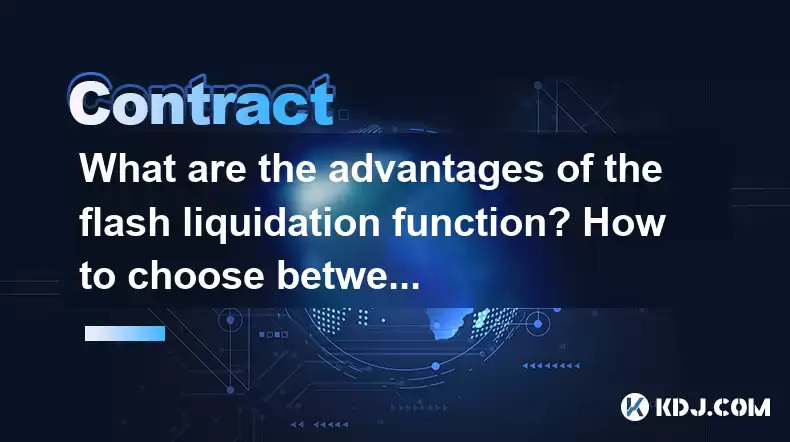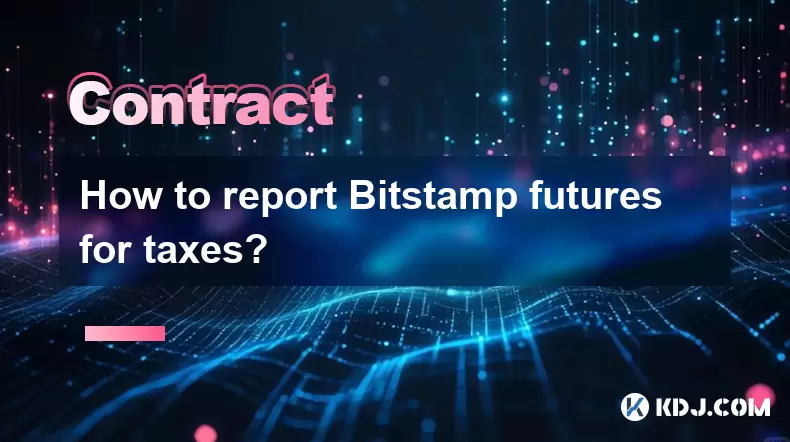-
 Bitcoin
Bitcoin $115100
1.27% -
 Ethereum
Ethereum $3675
2.71% -
 XRP
XRP $2.995
1.45% -
 Tether USDt
Tether USDt $1.000
0.02% -
 BNB
BNB $769.8
2.64% -
 Solana
Solana $168.0
3.25% -
 USDC
USDC $0.9999
-0.01% -
 TRON
TRON $0.3371
1.48% -
 Dogecoin
Dogecoin $0.2051
3.36% -
 Cardano
Cardano $0.7394
2.30% -
 Hyperliquid
Hyperliquid $38.15
0.42% -
 Stellar
Stellar $0.3966
-0.36% -
 Sui
Sui $3.486
2.93% -
 Chainlink
Chainlink $16.72
2.52% -
 Bitcoin Cash
Bitcoin Cash $568.0
4.36% -
 Hedera
Hedera $0.2440
2.59% -
 Ethena USDe
Ethena USDe $1.001
0.04% -
 Avalanche
Avalanche $22.16
2.06% -
 Litecoin
Litecoin $119.1
-0.73% -
 UNUS SED LEO
UNUS SED LEO $8.991
0.04% -
 Toncoin
Toncoin $3.232
-0.39% -
 Shiba Inu
Shiba Inu $0.00001233
2.82% -
 Uniswap
Uniswap $9.717
2.53% -
 Polkadot
Polkadot $3.664
1.85% -
 Dai
Dai $1.000
0.01% -
 Monero
Monero $281.2
-3.89% -
 Bitget Token
Bitget Token $4.350
1.55% -
 Cronos
Cronos $0.1428
5.07% -
 Pepe
Pepe $0.00001050
3.68% -
 Aave
Aave $262.3
3.54%
What are the advantages of the flash liquidation function? How to choose between market liquidation and limit liquidation?
Flash liquidation's speed and automation help traders manage risk effectively in volatile crypto markets, minimizing losses and maintaining account health.
Apr 29, 2025 at 06:07 am

The flash liquidation function in cryptocurrency trading platforms has become a crucial tool for traders looking to manage their positions effectively. Flash liquidation refers to the immediate closure of a position when certain conditions are met, typically when the collateral value falls below a predetermined threshold. This function offers several advantages that can significantly enhance a trader's ability to manage risk and optimize their trading strategy.
One of the primary advantages of flash liquidation is its speed. In the volatile world of cryptocurrencies, market conditions can change rapidly. Flash liquidation ensures that a position is closed almost instantly, minimizing potential losses. This rapid response can be the difference between a manageable loss and a catastrophic one, especially during times of high market volatility.
Another significant advantage is the automation of risk management. By setting predefined conditions for liquidation, traders can ensure that their positions are automatically closed when necessary, without the need for constant monitoring. This automation reduces the emotional burden of trading, as traders do not need to make split-second decisions during stressful market conditions.
Flash liquidation also helps in maintaining account health. By closing positions that are at risk of becoming undercollateralized, flash liquidation prevents the cascading effect of liquidations that can occur when multiple positions are closed simultaneously. This can help stabilize the overall market and protect other positions within the trader's portfolio.
Additionally, flash liquidation can be a tool for strategic trading. Traders can use flash liquidation to quickly exit positions that are no longer favorable, freeing up capital to invest in more promising opportunities. This flexibility can be particularly useful in the fast-paced crypto market, where opportunities can arise and disappear in a matter of minutes.
When choosing between market liquidation and limit liquidation, traders need to consider several factors to make an informed decision. Market liquidation involves closing a position at the current market price, while limit liquidation allows traders to set a specific price at which the position will be closed.
Market liquidation is typically faster and more straightforward. When a position is liquidated at the market price, the transaction is executed immediately, ensuring that the position is closed as quickly as possible. This can be beneficial in highly volatile markets where waiting for a specific price could result in further losses.
However, market liquidation can also result in less favorable prices. Since the position is closed at the current market price, traders may end up selling at a lower price than they would have preferred. This can be particularly problematic during times of high volatility when prices can fluctuate rapidly.
Limit liquidation, on the other hand, offers more control over the liquidation price. By setting a specific price at which the position will be closed, traders can aim to minimize losses or even turn a profit if the market moves in their favor. This can be particularly useful for traders who have a clear target price in mind and are willing to wait for the market to reach that level.
However, limit liquidation can be riskier in volatile markets. If the market moves quickly past the set limit price, the position may not be closed at all, leaving the trader exposed to further losses. Additionally, limit liquidation can take longer to execute, as the market needs to reach the specified price before the position is closed.
To choose between market liquidation and limit liquidation, traders should consider their risk tolerance and trading strategy. For those who prioritize speed and minimizing potential losses, market liquidation may be the better choice. On the other hand, traders who are willing to take on more risk in exchange for the possibility of a better price may prefer limit liquidation.
When implementing flash liquidation, traders should follow a few key steps to ensure they are using the function effectively. Here is a detailed guide on how to set up flash liquidation on a typical trading platform:
- Access the trading platform: Log in to your trading account on the platform where you wish to set up flash liquidation.
- Navigate to the position management section: Find the section of the platform where you can manage your open positions. This is usually labeled as "Positions" or "Open Orders."
- Select the position for liquidation: Choose the specific position for which you want to set up flash liquidation. Click on the position to access its details.
- Set the liquidation conditions: Look for the option to set up flash liquidation. This may be labeled as "Liquidation Settings" or "Auto-Liquidation." Enter the conditions under which you want the position to be liquidated, such as a specific collateral ratio or a price threshold.
- Choose between market and limit liquidation: Decide whether you want the position to be liquidated at the market price or at a specific limit price. If choosing limit liquidation, enter the desired price.
- Confirm the settings: Review your settings to ensure they are correct. Once satisfied, confirm the settings to activate flash liquidation for the selected position.
- Monitor the position: Keep an eye on the position to ensure that the flash liquidation settings are working as intended. Adjust the settings as necessary based on market conditions and your trading strategy.
Understanding the Mechanics of Flash Liquidation
Flash liquidation operates through a set of predefined rules that are programmed into the trading platform. When the conditions for liquidation are met, the platform automatically executes the liquidation order. This process is designed to be as fast and efficient as possible to minimize potential losses.
The mechanics of flash liquidation involve several key components. First, the platform continuously monitors the value of the collateral against the position's exposure. If the collateral value falls below the set threshold, the platform triggers the liquidation process. The liquidation order is then sent to the market, where it is executed at the best available price.
The speed of flash liquidation is facilitated by the platform's infrastructure. High-speed servers and advanced algorithms ensure that the liquidation order is processed and executed within milliseconds. This rapid execution is crucial in the fast-paced crypto market, where delays can lead to significant losses.
The Role of Collateral in Flash Liquidation
Collateral plays a critical role in the flash liquidation process. The value of the collateral determines whether a position is at risk of liquidation. Traders must ensure that they have sufficient collateral to cover their positions, as inadequate collateral can trigger flash liquidation.
The collateral ratio is a key metric in determining the risk of liquidation. This ratio compares the value of the collateral to the value of the position. If the collateral ratio falls below a certain level, the position is considered undercollateralized, and flash liquidation may be triggered.
Traders can manage their collateral to minimize the risk of flash liquidation. By regularly monitoring their positions and adjusting their collateral as needed, traders can maintain a healthy collateral ratio and avoid unnecessary liquidations. This proactive approach to collateral management is essential for effective risk management in crypto trading.
Comparing Flash Liquidation to Traditional Liquidation Methods
Flash liquidation differs from traditional liquidation methods in several ways. Traditional liquidation often involves manual intervention, where traders must actively monitor their positions and decide when to close them. This can be time-consuming and stressful, especially during periods of high market volatility.
In contrast, flash liquidation is fully automated. Once the conditions for liquidation are set, the platform takes care of the rest, closing the position automatically when necessary. This automation reduces the burden on traders and allows them to focus on other aspects of their trading strategy.
Another key difference is the speed of execution. Traditional liquidation methods can be slower, as they rely on manual decision-making and execution. Flash liquidation, on the other hand, is designed to be as fast as possible, ensuring that positions are closed quickly to minimize losses.
Practical Examples of Flash Liquidation in Action
To illustrate the effectiveness of flash liquidation, consider the following example. A trader has an open position in Bitcoin with a collateral ratio of 1.5. The trader sets up flash liquidation to trigger if the collateral ratio falls below 1.2. During a sudden market downturn, the value of Bitcoin drops rapidly, causing the collateral ratio to fall to 1.1. The flash liquidation function is triggered, and the position is closed immediately, minimizing the trader's losses.
In another example, a trader uses flash liquidation to manage multiple positions. The trader has positions in several cryptocurrencies, each with different collateral ratios and liquidation thresholds. By setting up flash liquidation for each position, the trader ensures that any position at risk of becoming undercollateralized is closed automatically, protecting the overall health of the portfolio.
These examples demonstrate how flash liquidation can be a powerful tool for risk management and strategic trading. By automating the liquidation process and ensuring rapid execution, flash liquidation helps traders navigate the volatile crypto market with greater confidence and control.
Frequently Asked Questions
Q: Can flash liquidation be used for all types of cryptocurrency positions?
A: Flash liquidation can be used for most types of cryptocurrency positions, including spot, margin, and futures trading. However, the specific implementation may vary depending on the trading platform and the type of position. Traders should check with their platform to confirm the availability and settings for flash liquidation.
Q: How does flash liquidation affect trading fees?
A: Flash liquidation may incur trading fees, similar to regular trading activities. The exact fees depend on the trading platform and the type of position being liquidated. Traders should review their platform's fee structure to understand the potential costs associated with flash liquidation.
Q: Is it possible to cancel or modify flash liquidation settings after they have been set?
A: Yes, it is usually possible to cancel or modify flash liquidation settings after they have been set. Traders can access the position management section of their trading platform to adjust the liquidation conditions or deactivate flash liquidation entirely. However, any changes will only take effect for future liquidations and will not affect any liquidations that have already been triggered.
Q: How can traders ensure that flash liquidation settings are working correctly?
A: Traders can ensure that flash liquidation settings are working correctly by regularly monitoring their positions and testing the liquidation process. Many platforms offer simulation or demo modes where traders can test their settings without risking real funds. Additionally, traders should stay informed about platform updates and changes that may affect flash liquidation functionality.
Disclaimer:info@kdj.com
The information provided is not trading advice. kdj.com does not assume any responsibility for any investments made based on the information provided in this article. Cryptocurrencies are highly volatile and it is highly recommended that you invest with caution after thorough research!
If you believe that the content used on this website infringes your copyright, please contact us immediately (info@kdj.com) and we will delete it promptly.
- Fireverse Token: Igniting a Musical Revolution in Web3
- 2025-08-07 08:27:45
- Ethereum, L2 Withdrawals, and Decentralization: A New Yorker's Take
- 2025-08-07 08:32:33
- Avalanche vs. Ruvi AI: Daily Sales Tell a Story of Crypto Disruption
- 2025-08-07 06:29:35
- DeSoc: The Crypto to Buy Now for a Decentralized Future (and Maybe 43x Gains!)
- 2025-08-07 06:50:16
- Arctic Pablo Coin: Riding the Meme Coin Wave with a Deflationary Twist
- 2025-08-07 07:18:13
- XRP Price Skyrocket? Decoding the Cryptocurrency's Next Move
- 2025-08-07 07:31:50
Related knowledge

Why is my Bitstamp futures position being liquidated?
Jul 23,2025 at 11:08am
Understanding Futures Liquidation on BitstampFutures trading on Bitstamp involves borrowing funds to open leveraged positions, which amplifies both po...

How to report Bitstamp futures for taxes?
Jul 30,2025 at 08:35am
Understanding Bitstamp Futures and Taxable EventsWhen trading Bitstamp futures, it’s essential to recognize that these financial instruments are treat...

Does Bitstamp offer inverse contracts?
Jul 23,2025 at 01:28pm
Understanding Inverse Contracts in Cryptocurrency TradingIn the realm of cryptocurrency derivatives, inverse contracts are a specific type of futures ...

What is the difference between futures and perpetuals on Bitstamp?
Jul 27,2025 at 05:08am
Understanding Futures Contracts on BitstampFutures contracts on Bitstamp are financial derivatives that allow traders to speculate on the future price...

How to find your Bitstamp futures trade history?
Jul 23,2025 at 08:07am
Understanding Bitstamp and Futures Trading AvailabilityAs of the current state of Bitstamp’s service offerings, it is critical to clarify that Bitstam...

Can I use a trailing stop on Bitstamp futures?
Jul 23,2025 at 01:42pm
Understanding Trailing Stops in Cryptocurrency TradingA trailing stop is a dynamic type of stop-loss order that adjusts automatically as the price of ...

Why is my Bitstamp futures position being liquidated?
Jul 23,2025 at 11:08am
Understanding Futures Liquidation on BitstampFutures trading on Bitstamp involves borrowing funds to open leveraged positions, which amplifies both po...

How to report Bitstamp futures for taxes?
Jul 30,2025 at 08:35am
Understanding Bitstamp Futures and Taxable EventsWhen trading Bitstamp futures, it’s essential to recognize that these financial instruments are treat...

Does Bitstamp offer inverse contracts?
Jul 23,2025 at 01:28pm
Understanding Inverse Contracts in Cryptocurrency TradingIn the realm of cryptocurrency derivatives, inverse contracts are a specific type of futures ...

What is the difference between futures and perpetuals on Bitstamp?
Jul 27,2025 at 05:08am
Understanding Futures Contracts on BitstampFutures contracts on Bitstamp are financial derivatives that allow traders to speculate on the future price...

How to find your Bitstamp futures trade history?
Jul 23,2025 at 08:07am
Understanding Bitstamp and Futures Trading AvailabilityAs of the current state of Bitstamp’s service offerings, it is critical to clarify that Bitstam...

Can I use a trailing stop on Bitstamp futures?
Jul 23,2025 at 01:42pm
Understanding Trailing Stops in Cryptocurrency TradingA trailing stop is a dynamic type of stop-loss order that adjusts automatically as the price of ...
See all articles

























































































